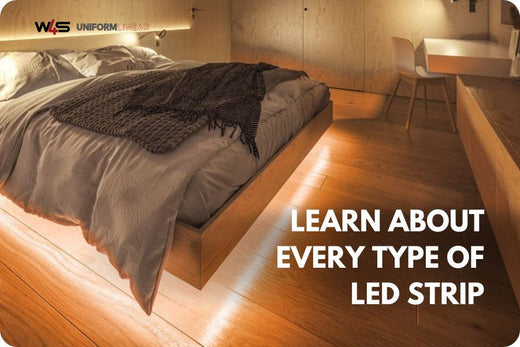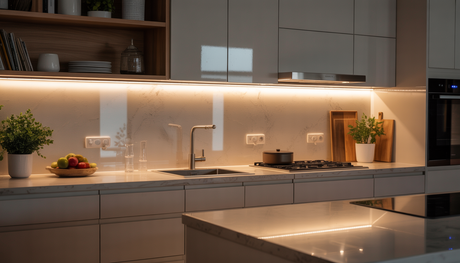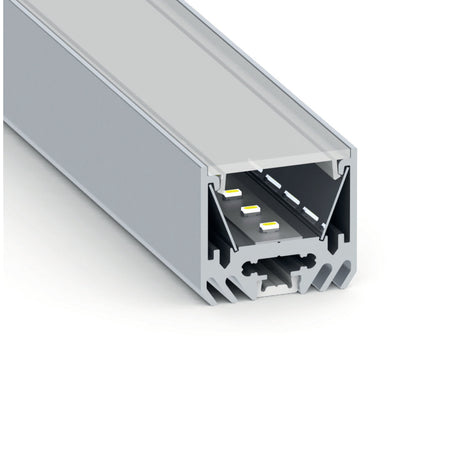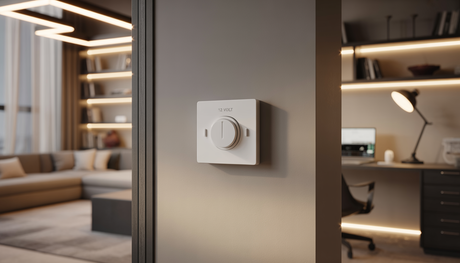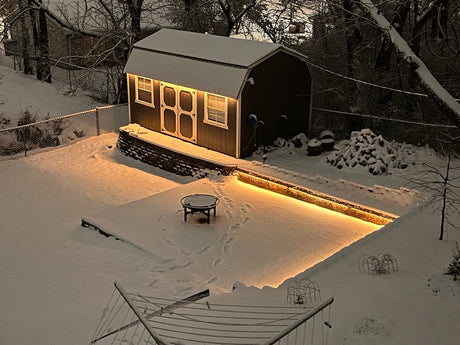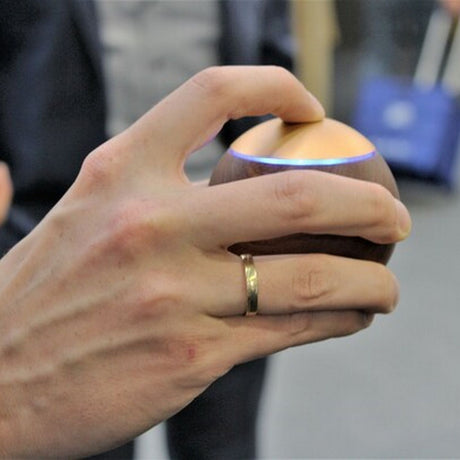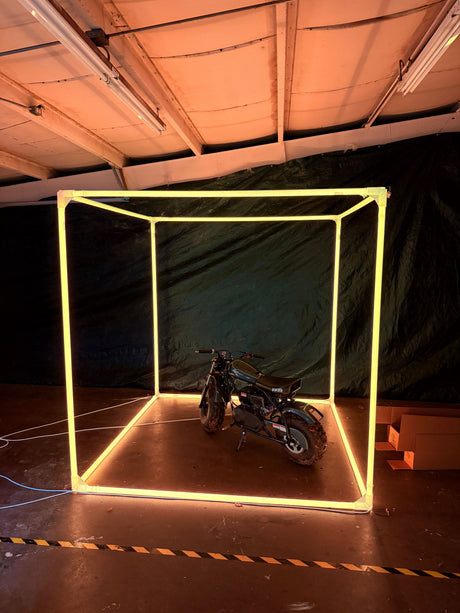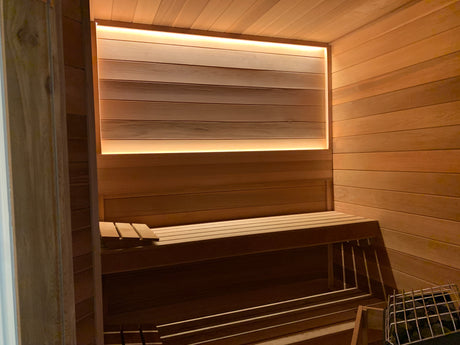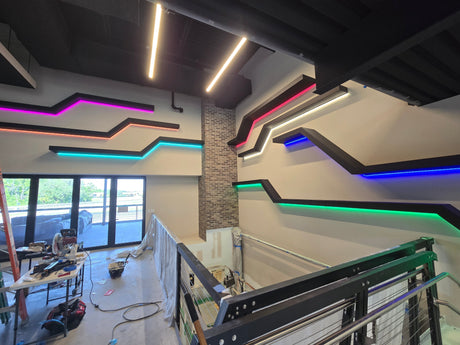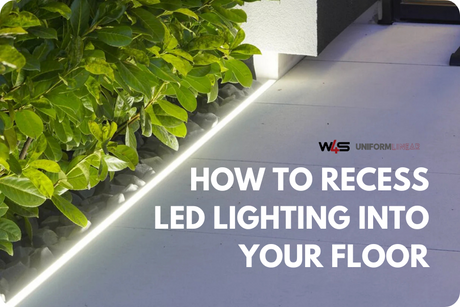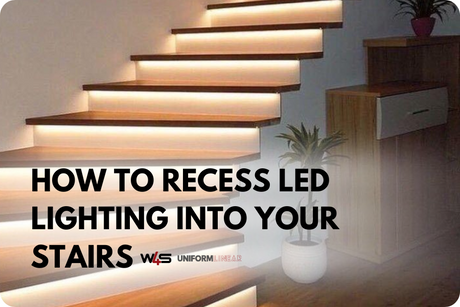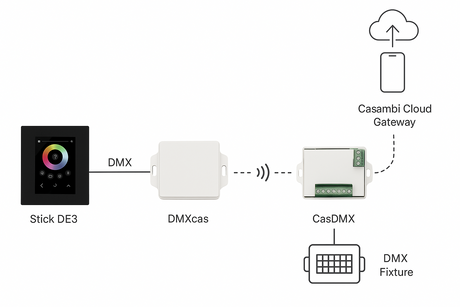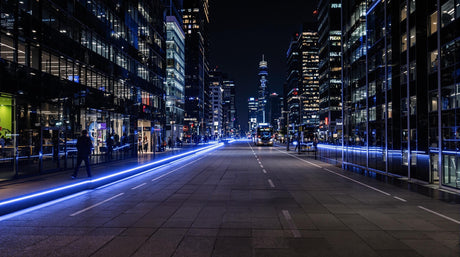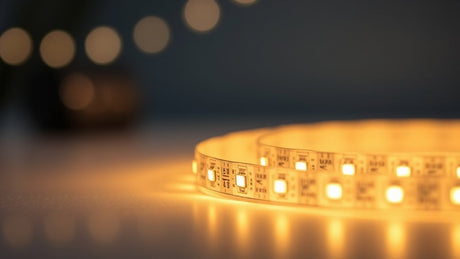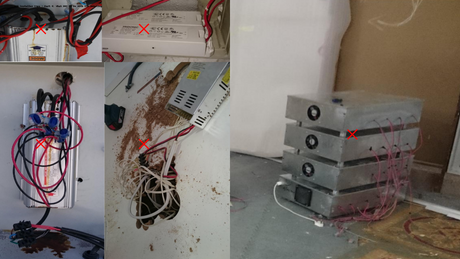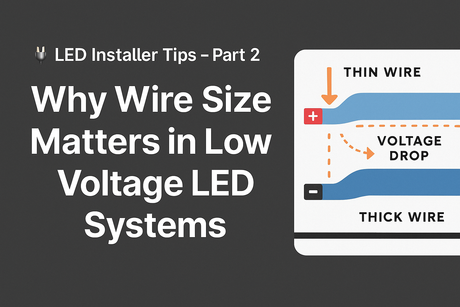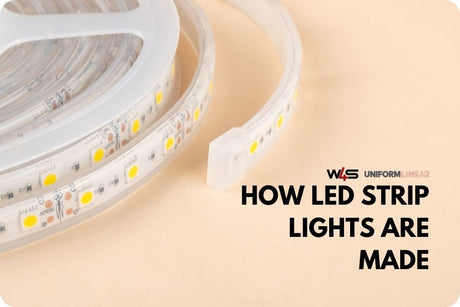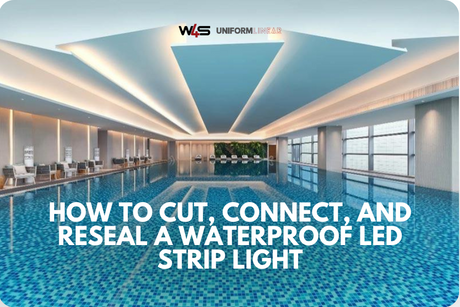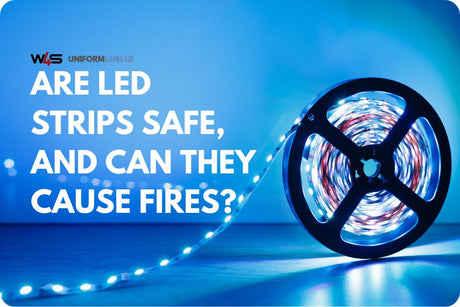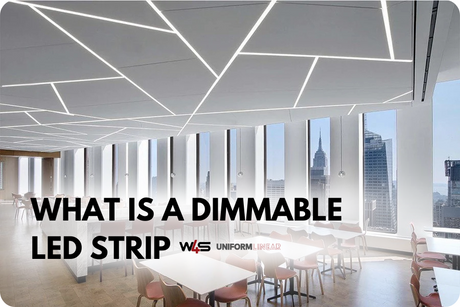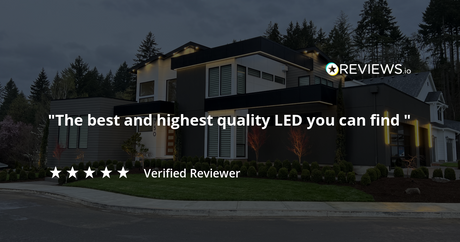LED strip lights have transformed the lighting industry with their adaptability, energy efficiency, and design flexibility. Whether you're looking for decorative lighting with RGB LED strip lights, functional dimmable LED tape lights, or waterproof strips for outdoor lighting, there's a perfect LED strip for your needs.
In this guide, we’ll explore all about LED strip lights and break down the different types, their features, and their ideal lighting applications.
What Are the Different Types of LED Strips?
You might already have some LED light applications at your house right now, perhaps LED lighting on wall-type? However, let's learn more about the many types of LED Strips there are with each of their respective uses.
White LED Strips

White LED strips are incredibly versatile and one of the most popular lighting solutions available today. They emit a bright and uniform light that mimics natural daylight, which is perfect for areas where consistent and clean lighting is needed. The different shades of white—warm, cool, and daylight—offer users the flexibility to choose the ideal color temperature based on the ambiance they wish to create.
Practical Uses:- Task Lighting: White LED strips are commonly used in kitchens and workspaces because they provide excellent illumination for tasks like cooking, reading, or detailed projects.
- Under-cabinet Lighting: Install these strips under kitchen cabinets or work desks to improve visibility.
- Accent Lighting: White LED strips can highlight architectural features, such as crown moldings, and add a touch of elegance to any room.
Key Benefits:
- Energy Efficiency: White LED strips consume very little energy compared to traditional incandescent lights, making them a great choice for reducing electricity bills.
- Long Lifespan: Most white LED strips can last for 50,000+ hours of use, making them a low-maintenance and cost-effective lighting option in the long run.
Single Color LED Strips
Single-color LED strips are designed to emit one consistent color of light, such as red, green, or blue. These are perfect for simple, monochromatic lighting needs, offering a clean and focused light output.
Practical Uses:
- Accent Lighting: Use red, green, or blue LED strips to add a pop of color to a room, particularly in areas where you want to create a specific mood or theme.
- Signage and Branding: Single-color strips are ideal for signage, particularly in retail spaces or businesses wanting to highlight logos or displays with uniform lighting.
- Themed Events: These strips work wonderfully in setting the right atmosphere for parties, concerts, or holiday events.
Key Benefits:
- Simplicity: The straightforward nature of single-color strips makes them an easy-to-use lighting solution for many applications.
- Low Power Consumption: Single-color LEDs typically consume less power than RGB or RGBW LEDs, which can be more energy-intensive.
Tunable White LED Strips

Tunable white LED strips offer adjustable color temperatures, ranging from warm to cool white. This adjustability allows users to change the lighting depending on the time of day or the mood they wish to create.
Practical Uses:
- Living Rooms and Bedrooms: Create a cozy and relaxing atmosphere with warm white light in the evening and switch to cool white for a more energetic vibe during the day.
- Offices: Ideal for workplaces where flexibility in lighting is important, tunable white LEDs can help reduce eye strain during long hours of work while maintaining energy efficiency.
- Restaurants or Retail Stores: The ability to adjust light color is perfect for establishments looking to set the right mood for customers at different times of the day.
Key Benefits:
- Ambiance Control: The ability to modify the warmth or coolness of the light allows for a dynamic lighting experience.
- Health Benefits: Studies suggest that tunable white lighting can help regulate circadian rhythms, improving sleep quality and overall well-being by mimicking natural daylight.
RGB LED Strips
RGB LED strips combine red, green, and blue LEDs to produce millions of different colors. With a controller, users can easily customize the lighting to match specific moods, events, or settings.
Practical Uses:
- Home Entertainment: Enhance the viewing experience by installing RGB strips behind your TV, gaming setup, or home theater system.
- Parties and Events: These strips are fantastic for creating dynamic lighting effects, whether you're hosting a birthday party, a club night, or a seasonal celebration.
- Creative and Artistic Installations: Artists and designers often use RGB strips for lighting sculptures, art displays, or other creative projects that require multi-colored illumination.
Key Benefits:
- Endless Color Options: With RGB strips, you have nearly unlimited color combinations, allowing for personalized and ever-changing lighting.
- Fun and Interactive: The ability to control and change colors creates a more engaging and fun lighting experience.
RGBW LED Strips

RGBW LED strips add a white LED to the traditional RGB configuration. This combination allows for the vibrant colors of RGB strips along with the option to achieve a pure, clean white light.
Practical Uses:
- Living Spaces: Perfect for areas that need both vibrant lighting for socializing and white light for more practical tasks, such as the living room or dining room.
- Retail or Commercial Spaces: Ideal for stores or restaurants where you need both colorful accent lighting and standard white lighting for general illumination.
- Themed Lighting: Create effects that combine color with pure white for an added dimension, perfect for events or mood lighting.
Key Benefits:
- Versatility: RGBW strips allow you to mix vibrant colors with pure white light, giving users more flexibility in creating the perfect lighting ambiance.
- Improved White Light: The dedicated white LED provides a more natural and true-to-color white light compared to RGB-only strips.
RGBWW and RGBCCT Strips
These strips combine RGB with both warm and cool white diodes, allowing users to not only change the color but also adjust the warmth of the white light, providing a more nuanced and flexible lighting experience.
Practical Uses:
- Home Lighting: Create cozy and inviting spaces with warm whites, or bright, clear whites for tasks, all while still having vibrant colors available.
- Restaurants and Bars: Perfect for establishments that want to provide mood lighting and have the flexibility to adjust brightness and warmth to match the time of day or special events.
- Photography and Filming: These strips offer excellent versatility for lighting setups, particularly when different lighting temperatures are required for different scenes or shots.
Key Benefits:
- Advanced Customization: RGBWW and RGBCCT strips allow for advanced customization of both color and warmth, offering maximum flexibility.
- High Color Rendering: These strips tend to have a higher Color Rendering Index (CRI), which means they provide more accurate and vibrant colors, perfect for spaces where aesthetics matter.
RGBA Strips

RGBA strips feature an amber LED in addition to the standard RGB configuration. This allows for richer and warmer color blends, making them ideal for creating a vintage or cozy atmosphere.
Practical Uses:
- Ambient Lighting: Perfect for creating a warm, ambient glow in bedrooms, living rooms, or lounges where a calm and relaxing atmosphere is desired.
- Themed or Vintage Lighting: RGBA strips can help achieve a vintage aesthetic, often used in retro or themed parties, cafes, or restaurants.
- Event Lighting: These strips are great for creating intimate and atmospheric lighting for weddings or special gatherings.
Key Benefits:
- Warmth: The addition of amber LEDs gives the light a much warmer feel, making them ideal for creating a soft and inviting environment.
- Rich Color Blends: RGBA strips are perfect for projects that require a blend of warmth and vibrant colors.
COB LED Strips
COB (Chip on Board) LED strips are known for providing a smooth, uniform light without visible hot spots. This technology places multiple LED chips directly on the strip’s board, resulting in a more even and consistent light output.
Practical Uses:
- Task Lighting: Ideal for workspaces like kitchens, garages, or workshops, where even, glare-free illumination is needed.
- Photography and Videography: COB LEDs are excellent for professional studios, as they offer high-quality lighting without shadows or uneven light distribution.
- Architectural Lighting: COB strips can be used to highlight architectural features in a sleek, modern way, without distracting from the design.
Key Benefits:
- Smooth Light Output: COB strips are perfect for those who require high-quality, consistent lighting without any noticeable hotspots.
- Reduced Glare: The uniformity of COB LEDs means less eye strain and glare, making them ideal for environments where people need to focus for extended periods.
Addressable/Pixel Strips

Addressable or pixel strips allow individual control of each LED, enabling advanced animations and effects. These strips are perfect for creating intricate light patterns or dynamic lighting displays.
Practical Uses:
- Stage Lighting: Pixel strips are ideal for live performances, where real-time control of light effects can enhance the ambiance.
- Signage: Used in digital signage to create vibrant and customizable displays.
- Creative Projects: Perfect for DIY enthusiasts or artists who want to incorporate complex lighting effects into their designs.
Key Benefits:
- Individual Control: Allows for complex lighting effects, such as animations and color gradients, that are impossible with traditional LED strips.
- Customization: This can be controlled via DMX controllers or software, enabling endless design possibilities for creative installations.
LED Neon Light Lines
LED neon light lines mimic traditional neon lights but use energy-efficient light-emitting diodes. These flexible strips are safer than glass neon tubes and offer a sleek, modern look for various applications.
Practical Uses:
- Decorative Lighting: Perfect for accent lighting in residential and commercial spaces like bars, restaurants, or event venues.
- Signage: Great for creating custom neon-style signs with a contemporary touch.
- Architectural Design: Can be used for outlining architectural features or adding a modern flair to walls or ceilings.
Key Benefits:
- Energy Efficiency: Consumes less power than traditional neon lights, making it a more sustainable option.
- Flexibility and Safety: Flexible design allows for easy installation on curved or irregular surfaces, and it’s much safer than glass neon.
Waterproof Strips

Waterproof LED strips are coated with a protective layer of silicone or epoxy, making them ideal for wet or humid environments.
Practical Uses:
- Outdoor Lighting: Suitable for outdoor use in patios, gardens, or decks.
- Moisture-Prone Areas: Perfect for bathrooms, kitchens, or areas exposed to high humidity.
- Aquarium Lighting: Waterproof strips are great for lighting fish tanks and aquariums, where water exposure is common.
Key Benefits:
- Durability: Resistant to water, dust, and dirt, ensuring longevity in challenging environments.
- Versatility: Ideal for both indoor and outdoor applications, providing reliable lighting wherever it’s needed.
Bendable LED Strips
Bendable LED strips are designed to flex and conform to curved or irregular surfaces, making them versatile for a wide range of creative projects.
Practical Uses:
- Architectural Installations: Used in design projects that require lighting around rounded edges or within tight spaces.
- Automotive Lighting: Common in car lighting projects, especially for highlighting curves or hard-to-reach areas.
- Furniture Lighting: Great for under-cabinet or inside furniture lighting where standard LED strips might not fit.
Key Benefits:
- Flexibility: Can bend around corners, curves, and other irregular surfaces, providing creative freedom in design.
- Easy Installation: Its flexibility simplifies the process of wrapping around tight spaces or hard angles.
Grow Light Strips

Grow light strips emit specific wavelengths of light that promote plant growth, making them essential for indoor gardening and agricultural purposes.
Practical Uses:
- Indoor Gardens: Perfect for growing plants in homes or apartments with limited natural light.
- Greenhouses: Used to supplement natural sunlight in greenhouses, helping plants thrive in controlled environments.
- Hydroponic Systems: Ideal for use in hydroponic setups, providing essential light for plant growth without soil.
Key Benefits:
- Promotes Growth: Specific wavelengths like blue and red light support plant health and photosynthesis.
- Energy Efficient: Consumes less energy than traditional grow lights while providing effective illumination for plants.
Food Lighting Strips
Food lighting strips are designed to accentuate the colors and textures of food, making them perfect for display purposes in the food service industry.
Practical Uses:
- Restaurants: Used in display cases or on serving counters to enhance the visual appeal of food.
- Supermarkets: Great for highlighting food items in grocery stores or delicatessens.
- Catering Events: Ideal for buffet tables or food stalls at catering events where food needs to stand out.
Key Benefits:
- Enhances Visual Appeal: The lighting highlights the vibrant colors and textures of food, making it look more appetizing.
- Energy Efficient: Provides effective lighting while consuming less energy than traditional lighting solutions.
Rigid LED Strips

Rigid LED strips are mounted on solid backings like aluminum or PCB, offering a sturdy and heat-resistant lighting option for specific installations.
Practical Uses:
- Under-Cabinet Lighting: Ideal for kitchens or workspaces where a stable, rigid lighting solution is required.
- Industrial Settings: Used in commercial environments like warehouses or factories, where durability is essential.
- Display Lighting: Perfect for use in retail displays where a stable, long-lasting light source is needed.
Key Benefits:
- Durability: Provides a more rugged and reliable lighting solution compared to flexible strips.
- Heat Dissipation: The rigid backing helps dissipate heat, ensuring longer lifespan and better performance.
Black LED Strips
Black LED strips feature a dark-colored backing, offering a sleek and discreet appearance. This makes them ideal for installations where the strip itself should blend in seamlessly with the environment.
Practical Uses:
- Ambient Lighting: Perfect for creating ambient or accent lighting in modern interior designs where the lighting fixture is not meant to stand out.
- Hidden Lighting Solutions: Ideal for under-cabinet or hidden lighting applications where the strip is not visible, but the light it provides is crucial.
- Minimalistic Designs: Great for spaces where a subtle, clean design is desired, such as offices, bedrooms, or living rooms.
Key Benefits:
- Sleek Appearance: The black backing allows the strip to blend into dark-colored surfaces, providing a seamless, minimalistic look.
- Discreet Lighting: Excellent for creating hidden or unobtrusive lighting, perfect for modern, minimalist spaces.
Black Light/UV LEDs
Blacklight LED strips emit ultraviolet (UV) light, which makes certain materials fluoresce, creating glowing effects. They are widely used for artistic, special event, and entertainment lighting purposes.
Practical Uses:
- Nightclubs and Bars: Used to create dramatic effects by making neon colors or white clothing glow under black light.
- Art Installations: Often employed in galleries and exhibitions to highlight artwork with fluorescent elements.
- Theatrical and Event Lighting: Frequently used in concerts, stage productions, or themed events to add a mysterious or glowing atmosphere.
Key Benefits:
- Creates Glow Effects: Ideal for creating glowing or fluorescent effects, making certain colors pop in dark environments.
- Specialized Lighting: Provides a unique lighting experience for creative projects, parties, or events that require a specific mood or visual effect.
The Different Voltages Commonly Used for LED Lighting
Whether it be for a plug-in LED light strip or an LED dimmable strip, each type of LED lighting application requires a specific voltage. Let's dig deeper into each voltage's explanation:
5 Volt
5-volt LED strips are low-powered options suitable for decorative lighting applications like computer setups and accent lighting.
12 Volt
12-volt LED strips are versatile and widely used for indoor and outdoor installations. Their balance of power and compatibility makes them popular in residential settings.
24 Volt
24-volt LED strips are preferred for longer installations because they experience less voltage drop compared to 12-volt strips. They’re often used in commercial applications.
48 Volt
48-volt LED strips are designed for industrial or large-scale projects. Their higher voltage reduces power consumption over long distances.
120 Volt
120-volt LED strips can be plugged directly into a power source without the need for additional transformers. These heavy-duty strips are ideal for outdoor or architectural lighting applications.
FAQs
Here are some of the most common questions about this topic:
What factors should I consider when choosing an LED strip light?
When selecting an LED strip light, consider the power source, desired brightness, length of the LED strip, and specific lighting application. Factors like energy efficiency, dimmable options, and whether the strip is for indoor or outdoor use are also crucial.
Why do LED strips have different voltages?
Different voltages, such as 12-volt or 24-volt, impact power consumption and suitability for long runs. Higher voltages typically experience less voltage drop, making them ideal for large installations, while lower voltages are better for shorter, more focused projects.
How can I prevent voltage drop in long LED strip installations?
To avoid voltage drop, ensure proper power source selection, use a dimmable power supply with adequate total wattage, and consider higher voltage options like 24-volt or 48-volt strips. Splitting the strip into smaller sections and using repeaters can also help maintain consistent brightness.
